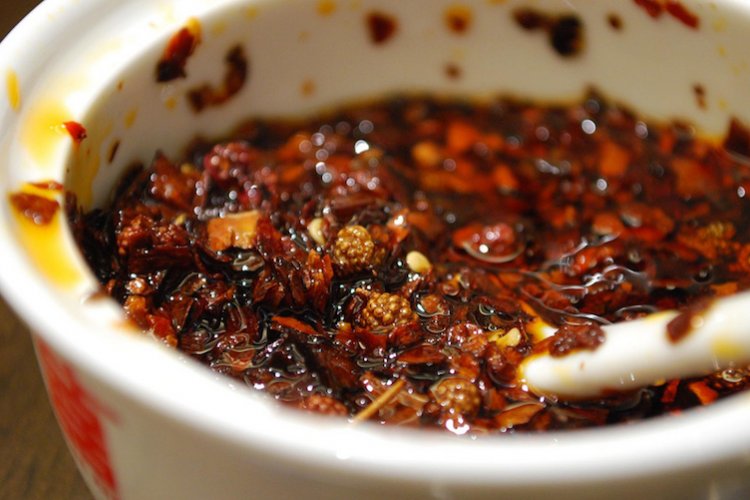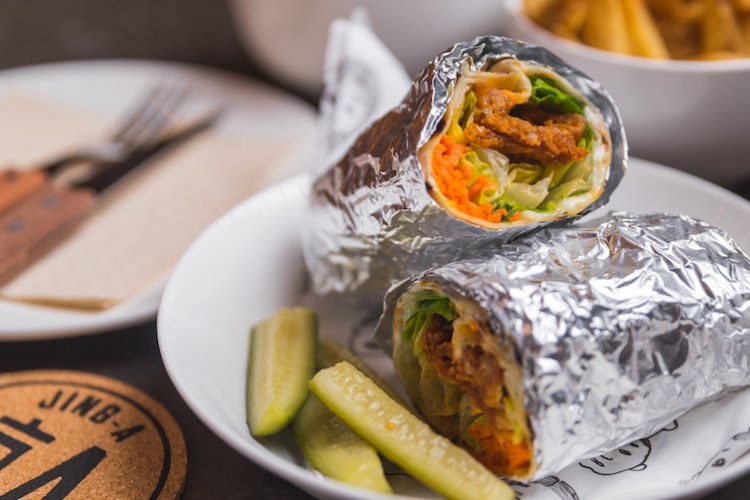The Life of Pie: We Need to Talk About Mincemeat
Years ago, when I lived in a more “remote” area of China, it was easy to come up with a good story about holiday hardship. Invariably there would be an indispensable seasonal ingredient that you couldn’t find – and then some cunning substitution or innovation. Can’t do without mulled wine? Why not do-it-yourself with a bottle of Great Wall, a soldering iron, a thermos flask and some spices you got in the market? No turkey? Well, a turkey’s just a bird after all, so just “rough it” with a Peking duck.
But nowadays, here in Beijing, a life of ease makes that more difficult. If you’ve money to spend, and live in striking distance of a shop that caters for Western tastes, there’s no reason why you should go without any of your holiday home-comforts. Turkeys are not literally ten-a-penny, but you can at least get them, and the shelves groan under the weight of all manner of booze, right down to and including eggnog. As for cheese, I even saw Stilton once in a Beijing market, for heaven’s sake.
I can’t help feeling it’s a pity, in a way. When you must make do, you start looking at local ingredients in new ways. Indeed, sometimes a substitution is superior – maybe even more traditional than what you thought was the “real thing,” like roasting a goose instead of a turkey. It can also cast many familiar festive foods in a new light.
Mince you’ve been gone
Take mince pies, for example. These small pies, about the size of a jam jar lid, are the quintessential Christmas pie in the UK and many other English-speaking countries. They have a fascinating history in the US, where until the 1940s they were regarded as the American pie – apple pie is a Johnny-come-lately by comparison. And while it is not quite true to say that you can’t get mince pies in China, to me they seem to make a somewhat tentative and embarrassed appearance.
Let’s not mince words
That surely has a lot to do with the name rather than the pie itself. “Mince” is misleading to someone who speaks English but is not familiar with English customs. Mince is ground-up meat, right? But these pies contain nothing but dried fruit and nuts. You can imagine how that makes someone feel who asks for a pie confidently expecting to find something meaty beneath the pastry.
Nor is clearer labeling much of a solution. True-blue mince pie fans would squawk that in English, “mince” merely means “finely chopped anything.” In any case, why should English food names be banally literal when mooncakes don’t contain lunar rock?
That said, the filling – the so-called mincemeat – is a reminder that, like many festive foods, mince pies are a real fusion of East and West. The dried fruits, nuts and spices that were once scarce and exotic in the West and thus restricted to festivals and feasts are now available so cheaply and in such variety that you can really go to town with them and make a very superior pie (see recipe, next page). I can already hear howls of execration from purists. This is where the controversy of the name comes back into play.
The swap meat
The truth is that mince pies are not quite misnamed and the recipe I give is only a vegetarian substitute. Moreover, they should contain a little bit of fat – the kind known as suet. It is not easy to buy here in the commercial form familiar in the UK (processed and boxed rice-sized pellets) but you can get it if you’re prepared to ask a local butcher to sell you the fat around an ox or mutton kidney. It is the fat that makes the toasted kidneys you get in some Xinjiang restaurants quite delicious. Eight ounces of that finely chopped should be used instead of butter.
It is not just a question of taste, although the suet does add a richness that butter really cannot. Although mince pies are not quite poetically named, they do have an evocative history. The fact is that they were once indisputably meat pies. Indeed, one very early recipe begins with the words: “Take one leg of mutton …” The American version remained a sweet, spiced meat pie until it largely disappeared in the 1940s. In a way, the mince pie is a vestige of medieval sweetmeats, when meat was spiced and candied almost as a preservative. Why did the meat gradually disappear from mince? As food storage techniques improved, people preferred to stick with fresh meat, but commercial producers also economized and reduced the meat content until it was insignificant. Prohibition in the United States also had a role, since alcohol played a very important role in preserving the meat.
So suet me
And I suppose that is why I am with the purists on this one and will press you to try using the suet. It should recall the history. You should feel like a king of old sampling the Yuletide sweetmeats on a dais. A proper mince pie is Good King Wenceslas singing “bring me flesh and bring me wine” in a deep, rolling bass. Without the suet, you really have got just “mixed dried fruit nut berry pie” or something. And that’s just jingle bells – and like jingle bells in China, it might as well be for any time of the year.
DIY MINCE PIE
Use the following as a general guide, but feel free to experiment with dried mangoes, strawberries, cranberries or any other fruit that takes your fancy.
For the mincemeat filling:
- 12 oz currants
- 8 oz sultanas
- 8 oz raisins
- 8 oz chopped peeled almonds
- (or other nuts)
- 2 oranges, zested and juiced
- 2 lemons, zested and juiced
- 8 oz mixed peel (candied fruit
- peel)
- 1 tsp ground cinnamon
- Half a nutmeg, grated
- 4 tsp mixed spice (pumpkin pie
- spice, or another spice mix of
- cinnamon, nutmeg, allspice)
- 1 lb cooking (tart) apples, chopped
- fine (sweet apples can be used
- as well; just add a little more
- lemon juice for tartness)
- 12 oz dark brown sugar
- 8 oz unsalted butter, chopped
- fine
- 4 tbsp brandy
For the pastry:
- 4 oz sugar
- 10 oz butter
- 1 egg yolk
- 16 oz all-purpose flour
- Milk
- demerara (coarse) sugar
1. Mix the dried fruits in a large bowl with the zest and juice from the oranges and lemons, mixed peel, cinnamon, freshly-grated nutmeg, mixed spice, apples and dark brown sugar. And that, very basically, is your mincemeat. All you need to do now is let the mixture sit.
2. The next day, preheat the oven to 120 degrees C. Add butter and brandy to the mixture and pop the whole lot into the oven for a few hours until the butter has coated the ingredients (this also helps to stop the mixture from fermenting).
3. When cool, bottle the mixture in jam jars (this will yield mince for 100 pies, enough to see you through the Christmas season).
4. If you want to try a mince pie straight away, make the pastry by beating sugar and butter until creamy, mix in the egg yolk and then add the flour. Mix well and chill.
5. Preheat the oven to 175-200 degrees C.
6. Roll out the cold dough to an eighth-inch thickness and cut differing sized circles of pastry. Place the larger circles in a greased patty-tin. Add enough mincemeat to fill. Put the smaller circle on top and press it into the bottom circle until it is sealed. Brush with milk and sprinkle with demerara sugar to give a crunchy texture.
7. Bake on the top shelf of the oven for 20 minutes.
This article originally appeared on page 32 of the December issue of the Beijinger.
Click here to see the December issue of






